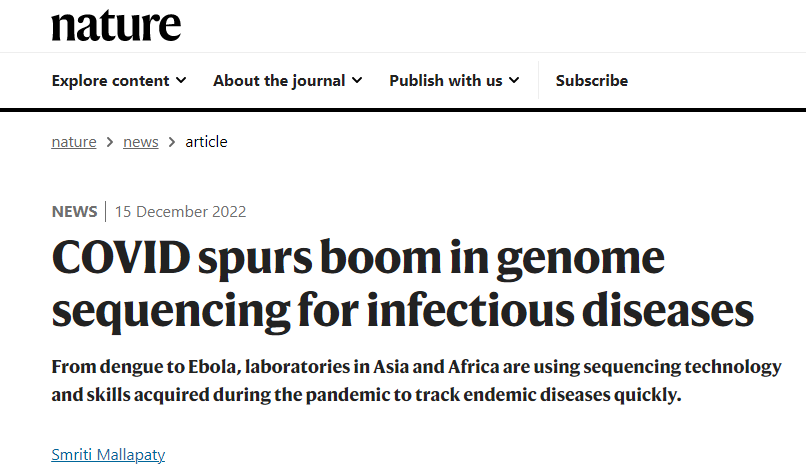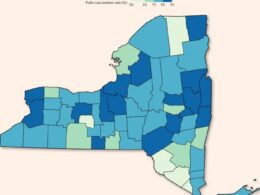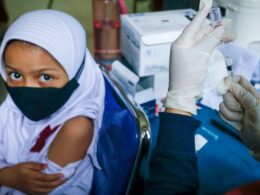This is a republication of the paper “COVID spurs boom in genome sequencing for infectious diseases”, publishe in “Nature”, with the title above.
transforming health (transformando a saúde)
research institute & advisory consulting
for continuous health transformation
Joaquim Cardoso MSc
Founder and Chief Researcher & Editor
December 25, 2022
Executive Summary
Overview
- Sequencing data combined with other clinical information can be used to diagnose diseases, identify chains of transmission, track mutations, trace outbreaks, speed up the public-health response and contribute to vaccine development.
- Before the pandemic, genomic sequencing was mainly reserved for research in many regions, but now it is being used for public health
- Many countries want to do their own sequencing, …“The days of sending your specimens overseas for analysis are numbered,”
- But some researchers worry that the funding that paid for SARS-CoV-2 sequencing will dry up and new machines will sit idle.
Pivoting to other diseases
- As testing for SARS-CoV-2 declines in many regions, countries are starting to pivot to sequencing endemic pathogens
- Several organizations have announced grants for sequencing non-SARS-CoV-2 pathogens in Africa and Asia, including the Bill and Melinda Gates Foundation in Seattle, Washington, which supports Africa PGI and Asia PGI.
- From Nipah virus to tuberculosis, every country has its own priorities.
- This increased interest in sequencing is generating more data for research, and opportunities to collaborate on new treatments and vaccines,
- But there is a shortage of people who can interpret sequencing data, such as bioinformaticians and epidemiologists.
- Many people have been trained in how to interpret COVID-19 data, but they don’t know how to apply this to other diseases
Rapid expansion
- The growth in genome-sequencing capacity has been swift and sweeping.
- During the pandemic, the Pasteur Institute of Cambodia obtained funds to buy an Illumina next-generation genome sequencer and several Oxford Nanopore third-generation sequencers, including small portable devices,
- It also bought servers and computers and upgraded the institute’s Internet connection to analyse the resulting reams of bioinformatics data.
- Such investments lowered the cost of sequencing a SARS-CoV-2 genome from US$1,000 in early 2020 to $20 by the end of 2021,
- And that capacity has also been used to quickly sequence samples from recent outbreaks of influenza and Chikungunya, as well as samples of dengue virus and some bat and rodent viruses.
- Now, his team is doing bulk ‘metagenomic’ sequencing of environmental samples, such as air from live-animal markets, swine slaughterhouses and bat caves.
A similar expansion has taken place across Africa.
- When a case of Ebola was identified in Beni in the Democratic Republic of the Congo (DRC) earlier this year, samples from the person were taken some 240 kilometres to a lab in Goma for testing and sequencing, avoiding the delay of transporting them across the country to the capital Kinshasa, more than 1,600 kilometres away.
- The lab quickly identified that the Ebola sequences were linked to those circulating a couple of years earlier in the region, and did not represent a new spillover event.
- Labs in the DRC are able to sequence Ebola samples rapidly because they are using the reagents and equipment available for SARS-CoV-2 sequencing
Cost challenges
- Researchers are worried that donor and government investment in genomic surveillance will dry up.
- Philanthropic funders typically don’t support long-term surveillance
- Sequencing machines also cost tens of thousands of dollars each year to maintain.
- The reagents required are expensive, and they can cost more in regions without established supply chains
- In some places, it can take months to get a technician to repair a broken machine
- Work is also needed to develop standardized processes for sequencing pathogens other than SARS-CoV-2 and to bring the costs of sequencing down
ORIGINAL PUBLICATION

COVID spurs boom in genome sequencing for infectious diseases
From dengue to Ebola, laboratories in Asia and Africa are using sequencing technology and skills acquired during the pandemic to track endemic diseases quickly.
Nature
Smriti Mallapaty
15 December 2022
Introduction
When a three-year old boy in Cambodia came down with avian influenza last year, researchers at the Pasteur Institute of Cambodia in Phnom Penh used genome-sequencing technology bought during the COVID-19 pandemic to sequence samples from the boy in a single day.
They confirmed that he had H9N2, a common virus found in birds. Later, they sequenced samples of the virus from a chicken living in the boy’s house, suggesting that that was how he was infected and that the virus was unlikely to spread to other people. Before the pandemic, samples would have been sent abroad for sequencing and such information would typically have taken weeks or months to arrive.
The lab is one of many across Asia and Africa that increased its sequencing capacity during the pandemic and is now looking beyond COVID-19 to study other diseases.
“Since early 2022, we’ve been thinking about how to utilize this capacity for other pathogens”, such as cholera, malaria, polio and Ebola, says Sofonias Tessema, who heads the pathogen genomics programme at the Africa Centres for Disease Control and Prevention in Addis Ababa.
Before the pandemic, genomic sequencing was mainly reserved for research in many regions, but now it is being used for public health,
… says Ruklanthi de Alwis, a viral immunologist at Duke-National University of Singapore (Duke-NUS) Medical School.
Before the pandemic, genomic sequencing was mainly reserved for research in many regions, but now it is being used for public health…

Sequencing data combined with other clinical information can be used to diagnose diseases, identify chains of transmission, track mutations, trace outbreaks, speed up the public-health response and contribute to vaccine development.
Many countries want to do their own sequencing, says Paul Pronyk, an infectious-diseases physician also at Duke-NUS, which supports the Asia Pathogen Genomics Initiative (PGI) — a programme that aims to enhance genomic surveillance in Asia.
“The days of sending your specimens overseas for analysis are numbered,” he adds.
Many countries want to do their own sequencing, …“The days of sending your specimens overseas for analysis are numbered,”
But some researchers worry that the funding that paid for SARS-CoV-2 sequencing will dry up and new machines will sit idle.
Many countries have the capacity to sequence other pathogens but aren’t doing so because there is no money, says Gagandeep Kang, a virologist at the Christian Medical College in Vellore, India.
“I’m a bit sceptical about how much we will be able to advance this.”

Rapid expansion
The growth in genome-sequencing capacity has been swift and sweeping.
During the pandemic, the Pasteur Institute of Cambodia obtained funds to buy an Illumina next-generation genome sequencer and several Oxford Nanopore third-generation sequencers, including small portable devices, says Erik Karlsson, a virologist at the institute.
It also bought servers and computers and upgraded the institute’s Internet connection to analyse the resulting reams of bioinformatics data.
During the pandemic, the Pasteur Institute of Cambodia obtained funds to buy an Illumina next-generation genome sequencer and several Oxford Nanopore third-generation sequencers, including small portable devices, says Erik Karlsson, a virologist at the institute.
It also bought servers and computers and upgraded the institute’s Internet connection to analyse the resulting reams of bioinformatics data.
Such investments lowered the cost of sequencing a SARS-CoV-2 genome from US$1,000 in early 2020 to $20 by the end of 2021, says Karlsson.
And that capacity has also been used to quickly sequence samples from recent outbreaks of influenza and Chikungunya, as well as samples of dengue virus and some bat and rodent viruses.
“It kind of ballooned into a lot of different things,” says Karlsson.
Now, his team is doing bulk ‘metagenomic’ sequencing of environmental samples, such as air from live-animal markets, swine slaughterhouses and bat caves.
Such investments lowered the cost of sequencing a SARS-CoV-2 genome from US$1,000 in early 2020 to $20 by the end of 2021,…
Now, his team is doing bulk ‘metagenomic’ sequencing of environmental samples, such as air from live-animal markets, swine slaughterhouses and bat caves.
A similar expansion has taken place across Africa.
In 2018, just 7 countries had next-generation sequencing equipment for public-health purposes, and now some 38 countries have those facilities, says Tessema, describing an expansion supported by the Africa PGI.
That work started before the pandemic, but the emergence of SARS-CoV-2 variants of concern accelerated access to funding and countries’ adoption of genomic technologies, says Tessema.
Since 2020, facilities across the continent have sequenced more than 140,000 SARS-CoV-2 genomes.
In 2018, just 7 countries had next-generation sequencing equipment for public-health purposes, and now some 38 countries have those facilities, says Tessema, describing an expansion supported by the Africa PGI.
the emergence of SARS-CoV-2 variants of concern accelerated access to funding and countries’ adoption of genomic technologies, says Tessema.
When a case of Ebola was identified in Beni in the Democratic Republic of the Congo (DRC) earlier this year, samples from the person were taken some 240 kilometres to a lab in Goma for testing and sequencing, avoiding the delay of transporting them across the country to the capital Kinshasa, more than 1,600 kilometres away.
The lab quickly identified that the Ebola sequences were linked to those circulating a couple of years earlier in the region, and did not represent a new spillover event.
Labs in the DRC are able to sequence Ebola samples rapidly because they are using the reagents and equipment available for SARS-CoV-2 sequencing, says Tessema.
Labs in the DRC are able to sequence Ebola samples rapidly because they are using the reagents and equipment available for SARS-CoV-2 sequencing …

Pivoting to other diseases
As testing for SARS-CoV-2 declines in many regions, countries are starting to pivot to sequencing endemic pathogens, says Anita Suresh, who oversees genomics and sequencing projects at FIND, the global alliance for diagnostics, headquartered in Geneva, Switzerland.
Several organizations have announced grants for sequencing non-SARS-CoV-2 pathogens in Africa and Asia, including the Bill and Melinda Gates Foundation in Seattle, Washington, which supports Africa PGI and Asia PGI.
From Nipah virus to tuberculosis, every country has its own priorities.
Some are driven by disease outbreaks that had decreased or been neglected during the pandemic, says Neelika Malavige, an immunologist who heads the dengue programme at the Drugs for Neglected Diseases Initiative and is based in Colombo. “Dengue is back with a vengeance this year.”
This increased interest in sequencing is generating more data for research, and opportunities to collaborate on new treatments and vaccines, say researchers.
But there is a shortage of people who can interpret sequencing data, such as bioinformaticians and epidemiologists. This poses a challenge, says Olivo Miotto, who studies malaria at the University of Oxford, and is based at the Mahidol Oxford Tropical Medicine Research Unit in Bangkok.
Many people have been trained in how to interpret COVID-19 data, but they don’t know how to apply this to other diseases, says Karlsson. “There’s still a global paucity of trained workforce.”
Many people have been trained in how to interpret COVID-19 data, but they don’t know how to apply this to other diseases,… “There’s still a global paucity of trained workforce.”

Cost challenges
Researchers are worried that donor and government investment in genomic surveillance will dry up.
Philanthropic funders typically don’t support long-term surveillance, says Senjuti Saha, a molecular microbiologist at the Child Health Research Foundation in Dhaka.
Sequencing machines also cost tens of thousands of dollars each year to maintain.
The reagents required are expensive, and they can cost more in regions without established supply chains, says Pronyk, who says solving the distribution gaps will be a priority for Asia PGI.
In some places, it can take months to get a technician to repair a broken machine, says David Blazes, who leads work on pathogen genomic sequencing at the Bill and Melinda Gates Foundation.
Work is also needed to develop standardized processes for sequencing pathogens other than SARS-CoV-2 and to bring the costs of sequencing down, say researchers.
Originally published at https://www.nature.com on December 15, 2022.
Ruklanthi de Alwis, a viral immunologist at Duke-National University of Singapore (Duke-NUS) Medical School.
Paul Pronyk, an infectious-diseases physician also at Duke-NUS, which supports the Asia Pathogen Genomics Initiative (PGI)
Gagandeep Kang, a virologist at the Christian Medical College in Vellore, India]
Anita Suresh, who oversees genomics and sequencing projects at FIND, the global alliance for diagnostics, headquartered in Geneva, Switzerland.
Neelika Malavige, an immunologist who heads the dengue programme at the Drugs for Neglected Diseases Initiative and is based in Colombo.
Olivo Miotto, who studies malaria at the University of Oxford, and is based at the Mahidol Oxford Tropical Medicine Research Unit in Bangkok.
Senjuti Saha, a molecular microbiologist at the Child Health Research Foundation in Dhaka.
David Blazes, who leads work on pathogen genomic sequencing at the Bill and Melinda Gates Foundation.












